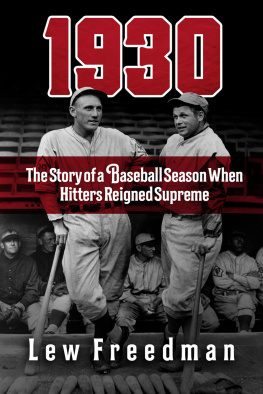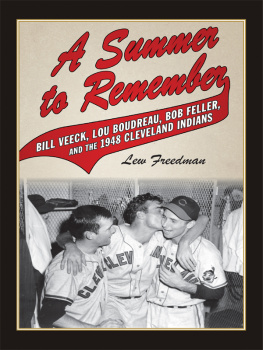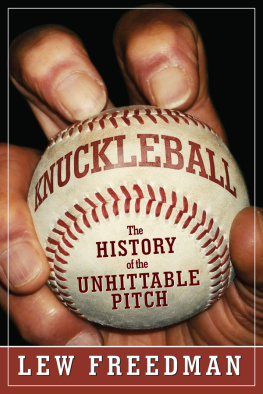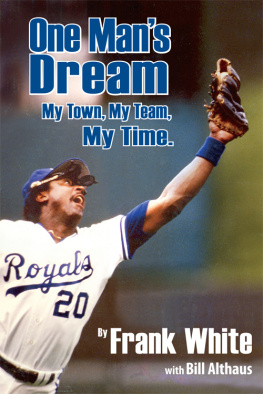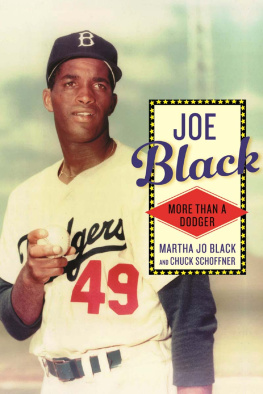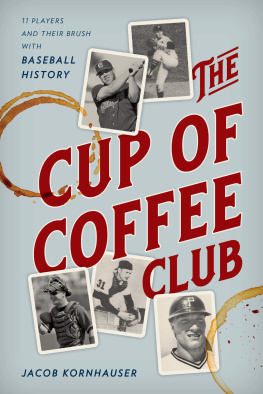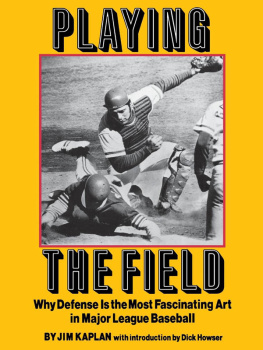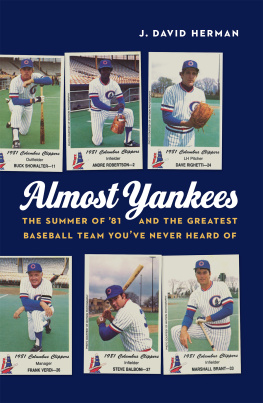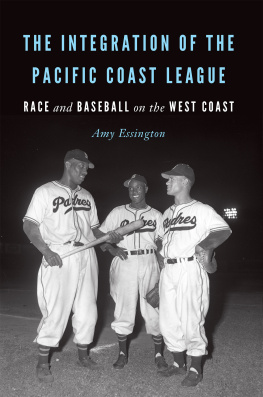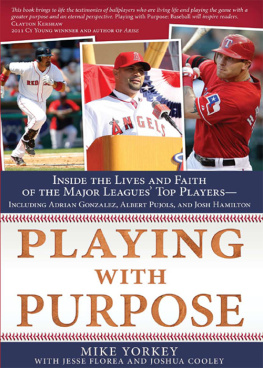
Also by Lew Freedman
and from McFarland
Joe Louis: The Life of a Heavyweight (2013)
DiMaggios Yankees: A History of the 19361944 Dynasty (2011)
The Day All the Stars Came Out: Major League Baseballs First All-Star Game, 1933 (2010)
Hard-Luck Harvey Haddix and the Greatest Game Ever Lost (2009)
Early Wynn, the Go-Go White Sox and the 1959 World Series (2009)
The Boyer Brothers of Baseball
Lew Freedman

McFarland & Company, Inc., Publishers
Jefferson, North Carolina
LIBRARY OF CONGRESS CATALOGUING DATA ARE AVAILABLE
BRITISH LIBRARY CATALOGUING DATA ARE AVAILABLE
e-ISBN: 978-1-4766-1736-7
2015 Lew Freedman. All rights reserved
No part of this book may be reproduced or transmitted in any form or by any means, electronic or mechanical, including photocopying or recording, or by any information storage and retrieval system, without permission in writing from the publisher.
On the cover: (clockwise, from upper right) Clete Boyer, Ken Boyer and Cloyd Boyer (National Baseball Hall of Fame Library, Cooperstown, N.Y.)
McFarland & Company, Inc., Publishers
Box 611, Jefferson, North Carolina 28640
www.mcfarlandpub.com
Preface
Generations have passed since Ken, Clete and Cloyd Boyer were in their heyday, but when they were in the major leagues in the 1950s and 1960s, the fact that a trio of brothers from a small town in Missouri made it to the big time regularly gained considerable attention from sportswriters and sportscasters.
Although pitcher Cloyds career was cut short because of arm injuries, he remained in the game for years as a coach and manager. Ken had the most glittering of resumes, an 11-time All-Star who won a Most Valuable Player Award as he became one of the St. Louis Cardinals most popular players. Clete was a regular at third base for the perennial American League-champion New York Yankees.
As if that was not enough achievement on the diamond for one family, seemingly every other year a new Boyer brother would appear on the scene trying to fight his way through the minors to the top level of the sport. There were seven Boyer brothers in all, and all seven of them signed professional baseball contracts.
Three Boyers reached the majors and the other four gave it a shot. Rarely has any family in any sport experienced that type of success. I found the entire concept of so many brother ballplayers to be fascinating.
Part of my interest was sparked by the belief that third baseman Ken Boyer was worthy of inclusion in the Baseball Hall of Fame, yet he was not garnering many votes. My certainty that Ken was being unfairly overlooked for the Hall only solidified when Chicago Cubs star Ron Santo was selected. This is to by no means minimize Santos accomplishments because I definitely feel Santo should have been chosen long before his own induction in 2012. However, during the same era Santo and Boyer were two of the top third basemen in the National League and I feel their achievements are virtually identical.
Originally, I was not aware that there were so many Boyer brothers, only the three major leaguers. Reading up on the family convinced me that there was a fun baseball story, and one worth telling. I found a receptive audience in Cloyd Boyer, the oldest brother, and the trend-setter for his family when it came to inking professional deals.
Alas, Ken Boyer and Clete Boyer had both passed away, but a number of brothers and sisters among the original 14 siblings were alive and well, many still residing in Western Missouri where they grew up. I made a pilgrimage to the area and spent time talking to the several members of the family who are quoted in this book.
For an author and researcher, it would have been easier if Ken and Clete had been able to speak for themselves, but that was not possible. In researching this volume I gleaned a large percentage of information from interviews with Cloyd Boyer, several other members of the Boyer family, and some former major league teammates of the big-league brothers. Except where otherwise noted, all quotations in this book come from those interviews.
In addition, given the prominence of Ken and Clete in their prime playing years there was a wealth of material about them from old newspaper and magazine stories, as well as information in books written about the St. Louis Cardinals and New York Yankees teams of that era that included passages of direct relevance to Ken and Clete Boyer.
Periodically, fathers and sons reach the majors, as do brothers, two most commonly, and sometimes three. But its doubtful that we will ever again see a family that includes seven boys all of whom play professional baseball.
Those of a certain age with good memories will recall the slickness afield of Ken and Clete Boyer and their prominence in baseball at a time when each league had only eight teams. Yet even those good fans probably dont know that Cloyd spent half a century in the game and that four other brothers were also able to state proudly that they played baseball in the pros.
This is the untold story of the Boyer brothers, a look behind the scenes at the sport through the eyes of one American family.
Introduction
The arm didnt hold up as long as he wanted it to or believed it should. Cloyd Victor Boyer was the oldest of the seven brothers growing up in tiny Alba, Missouri, one of 14 children in all.
A right-handed pitcher born in 1927, Cloyd not only could throw a dancing fastball, he knew his stuff. And even though his arm was not tough enough to withstand the rigors of regular big league pitching for very long, his mind never stopped gathering information. He absorbed knowledge, and the result was a long career in the majors as a scout, coach and manager.
Although Cloyd was the oldest brother, he was not the most famous. The Boyer clan loved baseball. Cloyd set the example, was the pathfinder. But in all, seven Boyer brothers eventually were paid to play professional baseball at one time or another from the late 1940s through the early 1970s.
Ultimately, Cloyds renown was eclipsed by younger brother Ken (Cloyd usually refers to him by his given name, Kenton), who became a star for the St. Louis Cardinalsthe team they all rooted for, even if it was located on the far eastern end of Missouriand Clete, who became the third baseman for the perennial World Series-contending New York Yankees. At the height of their fame Ken and Clete engaged in a showdown in the 1964 World Series with family members sprinkled around the stands busting with pride.
Cloyd was talented, inherited a sound work ethic from their father, Chester Vern, and made his own breaks. Ken was the natural athlete and many believe he should be in the Baseball Hall of Fame. Clete was the character, the funnyman, always looking to have a good time and trying to make sure that anyone visiting with him had fun as well.
Over the decades a fair number of members of the same family have achieved the ultimate dream of reaching the majors. There have been fathers and sons, and there have even been three-generation ballplayers that made it to the big-time. There have been numerous brother acts. Hank Aarons brother Tommie played big-league ball. Gaylord and Jim Perry were outstanding pitchers. Phil and Joe Niekro were likewise tremendous hurlers. Paul and Lloyd Waner both became Hall of Famers. Joe, Dom and Vince DiMaggio made for a famous trio.
Next page

